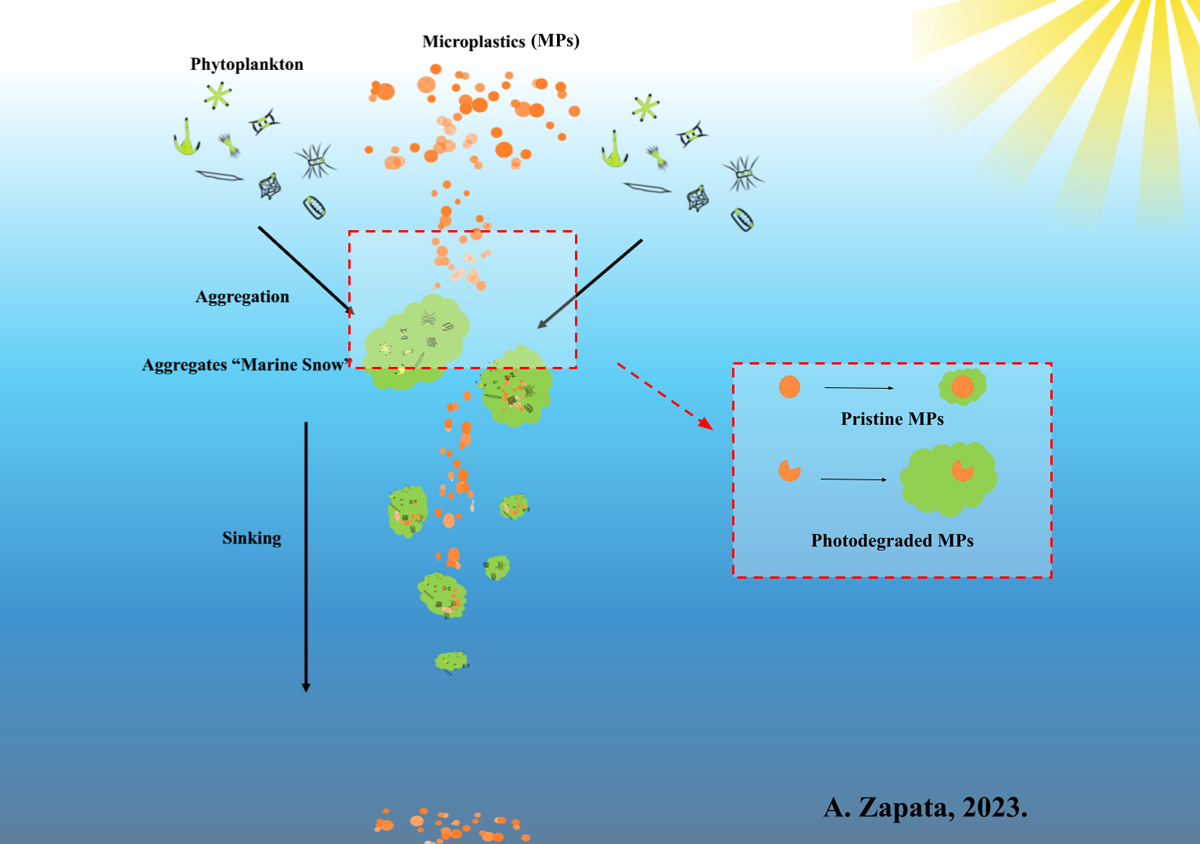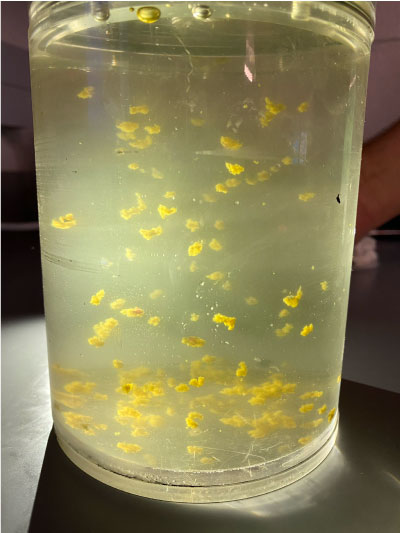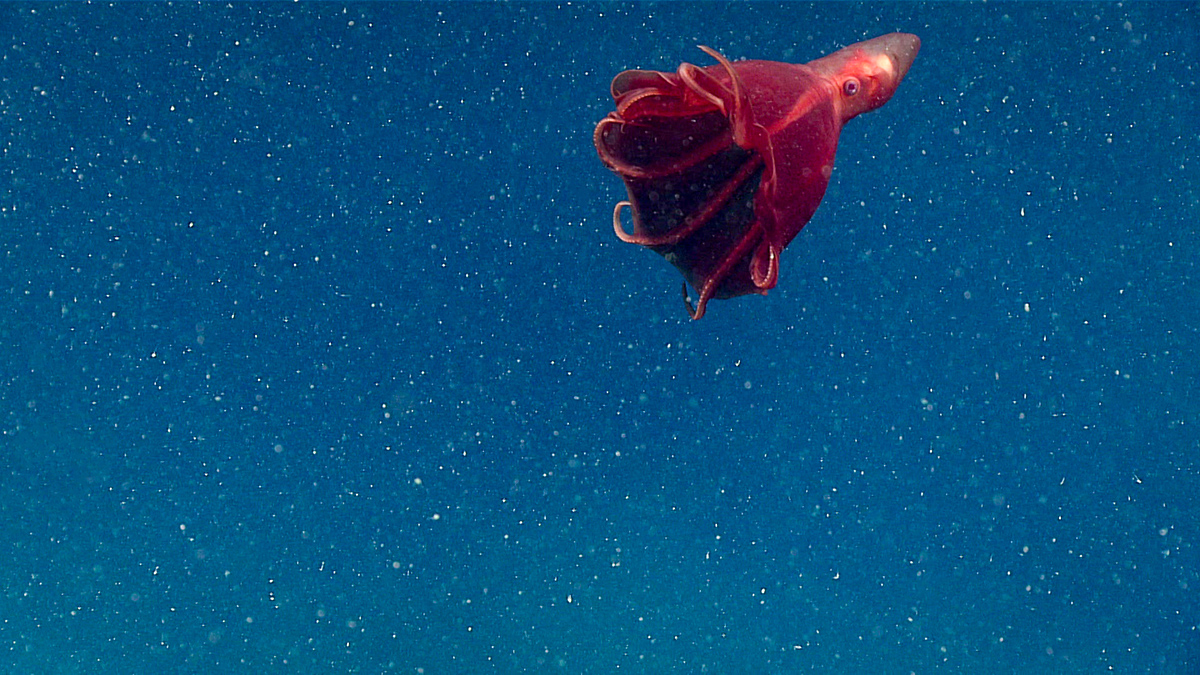A translation of this article was made possible by a partnership with Planeteando. Una traducción de este artículo fue posible gracias a una asociación con Planeteando.
In 2020, scientists discovered that plastics had infiltrated our planet’s water cycle, hitching a ride through clouds and rain. Research shows that the carbon cycle is chock-full of plastic as well: Microscopic particles are drifting to the seafloor with natural oceanic debris called marine snow.
In a study presented at AGU’s Annual Meeting 2023 in San Francisco, scientists showed how bacteria and phytoplankton colonize the surfaces of sunburned bits of microplastic and drift to the bottom of the ocean. This debris-driven flux potentially upsets the delicately balanced system that removes carbon from the atmosphere.
Ocean carbon goes through a cyclical process called the biological carbon pump. Plantlike organisms called phytoplankton float on the surface and use carbon from the air in photosynthesis. Zooplankton consume phytoplankton and excrete fecal matter into the water. Their poop combines with tiny bits of dead plants and animals and sinks to the seafloor in microscopic flakes called marine snow. Upwelling eventually cycles them back to the surface.
To understand how microplastics have affected this vital system, oceanography graduate student Astrid Zapata De Jesús at the University of New Hampshire and her colleagues studied biofouling—the process that envelops microplastics in marine snow. Biofouling happens when anything floating in the ocean—from boats and buoys to microscopic plastics—gets colonized by bacteria and phytoplankton that collect on the surface of the foreign object. These cells combine to produce a sticky organic ooze called biofilm.
The researchers hypothesized that microplastic marine snow forms as microorganisms create little snowballs of biofilm around cores of microplastic. These aggregates collect other organic hitchhikers in the water and sink to the seafloor. The team tested whether biofilm buildup on microplastics affects how fast they sink.

The group studied both pristine and degraded microplastics. To damage and “weather” the plastic fragments, the researchers used ultraviolet light in the laboratory to mimic the natural effects of prolonged exposure to sunlight. “The idea is, the plastic surface gets bumpy and rough, so there are more spaces and more holes for microorganisms to attach,” Zapata De Jesús said.

The researchers exposed both kinds of plastics to natural seawater and two mixtures of microorganisms for 15 days. They periodically used a purple dye to trace any attached living cells.
In a surprise, the researchers found no relationship between biofilm buildup on the particles and their sinking speeds. Instead, the team believes, other physical factors such as changes in density and water resistance in the materials determine how quickly they settle to the ocean floor.
However, the results showed that the degraded plastics collected biofilms faster than the pristine plastics, suggesting that plastic pollution floating under the Sun develops a slimy coating of biofilm faster than previously thought.
More Plastics in the Sea
The ever-growing storm of plastic-rich snow might trigger unforeseen ecological chain reactions, according to the researchers.
For instance, some microbial hitchhikers could encounter new organisms in deeper water and have to compete for food. The photosynthesis and respiration rates for these cells could change, affecting how much oxygen the ocean produces for the planet.
The added carbon in marine snow could also alter how much of it cycles back to the surface and into the atmosphere as carbon dioxide via long-term upwelling.
“This study will form one of the building blocks of this emerging understanding of how microplastic pollution may be affecting natural carbon cycling.”
The natural movement of particles involved in the planet’s biological carbon pump is already complex, even without adding microplastics to the mix, said biogeochemical modeler Karin Kvale at GNS Science in New Zealand, who was not involved in the work. “This study will form one of the building blocks of this emerging understanding of how microplastic pollution may be affecting natural carbon cycling,” Kvale said.
Indeed, her team’s study highlights just one piece of a large, complex system, Zapata De Jesús said. She emphasized how important it is for the public to have a better grasp of basic processes in the ocean: “As we add more carbon to the atmosphere, we need to understand how microplastic pollution and other things affect these vital procedures, because if they get super disrupted, that will have consequences.”
—Molly Herring (@mollymherring), Science Writer


